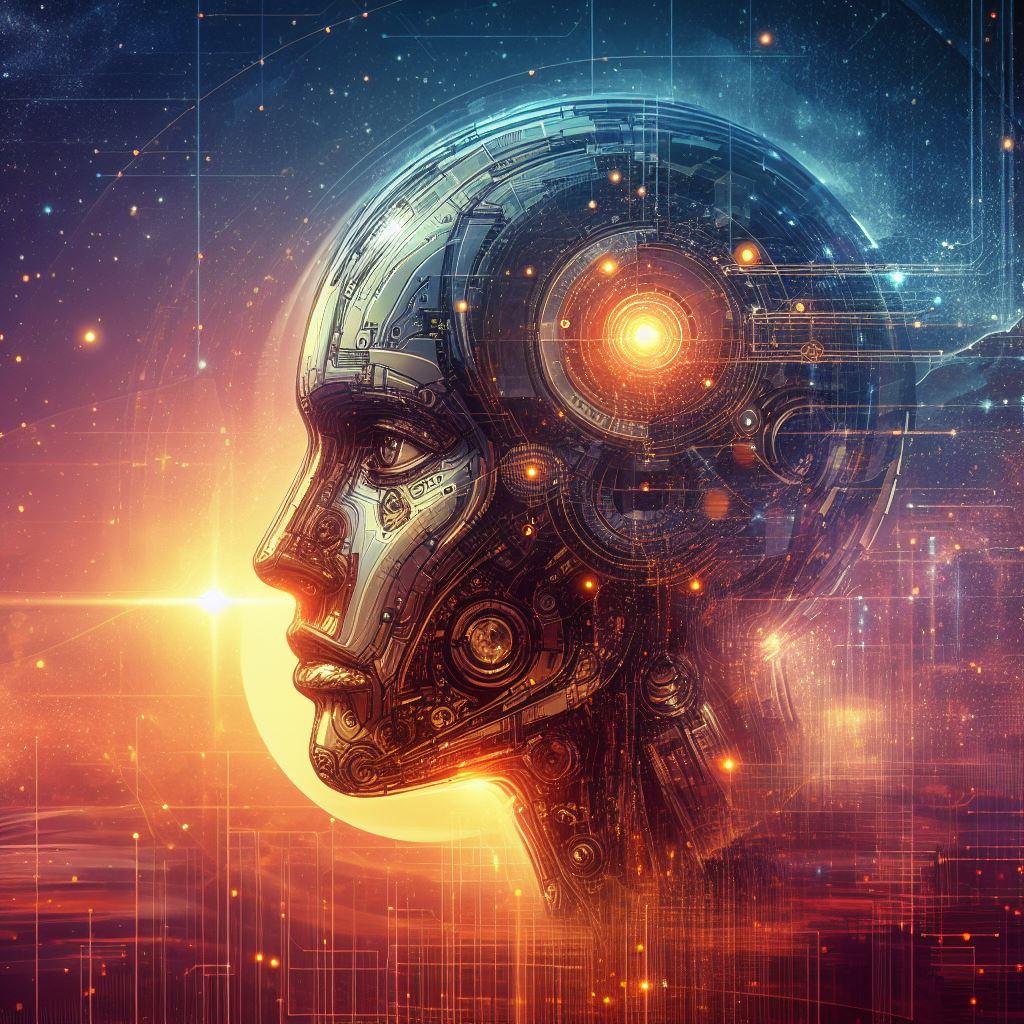Critical Posthumanism
The Stone Gods" by Jeanette Winterson

Susan Arriaga
“The no longer and the not yet” – Critical Posthumanism in Winterson’s The Stone Gods
Jeanette Winterson’s The Stone Gods encompasses various contemporary literary theories, including gender theory, posthumanist feminism, ecological justice, and queer theory. The primary focus of this paper is to explore how this novel serves as a valuable teaching tool for critical posthumanism in higher education, specifically through power dynamics, inequality, and the treatment of nonhuman entities. By engaging students in an interpretive analysis of 21st-century issues within posthuman theory, Winterson’s narrative offers rich material for critical examination. Themes such as the blurring of human and technological boundaries, the exploration of nonhuman agency, and the scrutiny of power dynamics within technologically driven societies resonate deeply with critical posthumanism. Contrasting more optimistic views on posthumanism, The Stone Gods questions these issues that stem from technology’s omnipresence in the posthuman world. Through ethical questions regarding the treatment of nonhuman entities and environmental stewardship, the novel prompts readers to consider the ethical implications of technological advancement. By navigating these complex issues alongside Winterson’s characters, students can gain insight into the intricate relationship between technology and societal power structures, fostering critical thinking and engagement with contemporary concerns in higher education settings.
The Stone Gods spans three distinct time periods. The first period, known as “Planet Blue,” is set in the near future. On the deteriorating planet Orbus, we meet Billie, a woman navigating a society where women manipulate their DNA to exert control over men. Here, she forms a relationship with Spike, a new nonhuman species called Robo-sapiens. The second period, “Easter Island” transports us to the deforested island in the 1700s, where Billie finds herself stranded among the inhabitants, including a character resembling Spike. In the third period, “Post-3War” and “Wreck City,” centuries later, after Billie has survived WWIII,
she plays a role in the development of Robo-sapiens, while the ever-present Spike exists only as a robotic head. Across these periods, Billie’s death is a recurring theme. Yet, she leaves us with a poignant reminder of her enduring humanity amidst the complexities of her existence: the no longer but not yet. Due to time constraints and word count limits, I am using just the first time
period to make my point. In “Planet Blue,” the narrative examines power dynamics and inequality through the dominant elite, represented by ‘Central Power’—predominantly wealthy male politicians and corporations led exclusively by men—who decide the fate of humanity’s next frontier: a new planet to inhabit as their own nears destruction. This decision pits two groups against each other: the privileged, largely superficial high consumers, and the marginalized, including the believers and the collective, who face the grim prospect of remaining on a dying planet. This disparity between the privileged and the marginalized underscores the
entrenched inequalities perpetuated by hegemonic political structures. As protagonist Billie questions this disparity, her boss’s dismissive response reflects the indifference of the ruling elite towards the plight of the marginalized, emphasizing their responsibility to manage resources sensibly. ” … you’re not giving a ride to either the Believers or the Collective?” Billy asks. “When did they ever do anything for us? The Central Power is trying to live responsibly on a crowded planet, and that bunch are still scanning the skies for God and draining the last drops of oil out of the ground. They can go to Hell,” her boss replies. (Winterson, 2007 p.7) Through the lens of critical posthumanism, this narrative exposes how power operates through force and social consent bestowed upon the ruling elite.
Nouri (2020) delves into this power dynamic, illuminating how dominant political systems sustain inequality by molding women’s desires and subjectivity to fit within established norms. The narrative emphasizes that this ruling elite does not solely rely on coercion but also leverages the social consent they wield. Aside from Billie, the denizens of Orbus are depicted as “sheeple,” individuals who passively conform, obediently follow, and are easily swayed, akin to sheep in a flock.
Furthermore, Winterson skillfully navigates complex ethical dilemmas in the context of critical posthumanism through her portrayal of characters whose actions and decisions raise profound questions about the treatment of nonhuman entities and the environment. A notable example is the relationship between Billie and Spike, which challenges traditional notions of humanity and ethics. While some characters view Spike as merely a machine, Billie forms a deep emotional bond with her, blurring the lines between human and nonhuman agency. Spike’s demonstration of emotional responses and independent decision-making suggests a level of sentience beyond her artificial nature, prompting readers to reconsider their ethical stance towards artificial intelligence and the rights of nonhuman beings.
Karen Barad, a quantum physicist, provocatively questions the traditional privileging of language and culture over matter, urging us to reconsider the agency and historicity inherent in nonhuman entities. She challenges the notion that matter is inherently passive or inert, arguing
instead that it exhibits its own agency even at the atomic level. Barad calls for a shift away from the ‘humanist orbit’ that centers on human agency, advocating for recognition of matter’s independent agency and historical significance. In this view, history is not solely a product of human actions but emerges through a cooperative interplay between human and nonhuman actors. This perspective challenges conventional understandings of historical events as
exclusively human-driven, prompting us to acknowledge the active participation of nonhuman elements in shaping the course of history, especially the future that will become history.
Additionally, Herbrechter (2017) posits that critical posthumanism prompts questions about the nature of humanity and its relationship with nonhuman others, such as the environment, animals, and machines. The Stone Gods serves as an exemplary text for exploring these questions, as it challenges conventional boundaries between human and nonhuman agency and prompts readers to reconsider their ethical responsibilities in a technologically mediated world.
In conclusion, Jeanette Winterson’s The Stone Gods emerges as a multifaceted exploration of critical posthumanism, offering a rich tapestry of themes and narratives that resonate deeply with contemporary concerns. Winterson prompts readers to critically engage with the complexities of a technologically mediated world and its ethical dilemmas by exploring power dynamics, inequality, and the treatment of nonhuman entities. The novel’s intricate narrative structure, spanning multiple time periods and perspectives, facilitates a nuanced examination of the blurred boundaries between human and nonhuman, as well as the ramifications of socio-political hierarchies. By foregrounding characters whose actions and decisions raise profound questions about humanity, agency, and responsibility, Winterson challenges readers to reconsider their ethical stance towards artificial intelligence and the rights of nonhuman beings.
Moreover, although I was unable to elaborate on the other narratives in the novel, Winterson’s engagement with contemporary literary theories, including gender theory, posthumanist feminism, ecological justice, and queer theory adds layers of complexity to the novel’s thematic exploration. Through these theoretical lenses, readers are encouraged to critically interrogate the intersections of power, identity, and technology, fostering a deeper understanding of the intricate relationship between humans and their environment.
As Karen Barad provocatively questions the traditional privileging of language and culture over matter, The Stone Gods prompts usto reconsider our assumptions about agency, historicity, and the active participation of nonhuman elements in shaping our world. In doing so, the novel challenges us to envision new possibilities for coexistence and ethical engagement in an increasingly interconnected and technologically driven age.
Ultimately, The Stone Gods serves as an exemplary text for critical reflection and engagement in higher education settings, offering students a compelling entry point into the complex terrain of critical posthumanism. Through its exploration of power dynamics,
inequality, and the treatment of nonhuman entities, Winterson’s novel invites readers to grapple with the ethical implications of technological advancement and to envision alternative futures grounded in compassion, equity, and ecological stewardship.
Works Cited
Barad, Karen. “Posthumanist Performativity: Toward an Understanding of How Matter Comes to Matter.” Material Feminisms. Eds. Stacy Alaimo and Susan Hekman. Bloomington:
Indiana UP, 2010. 120–154.
Herbrechter, S. (2017, November 17). Critical Posthumanism. Critical Posthumanism Network.
Retrieved February 20, 2024, from https://criticalposthumanism.net/critical-
posthumanism/
Nouri, N. (2020, December). Jeanette Winterson’s The Stone Gods: Voicing a Postmodernist Embodiment. Journal of Modernism and Postmodernism Studies, 1(2), 61-65. 10.47333/modernizm.2020265820
Winterson, J. (2008). The Stone Gods. Penguin Books.

